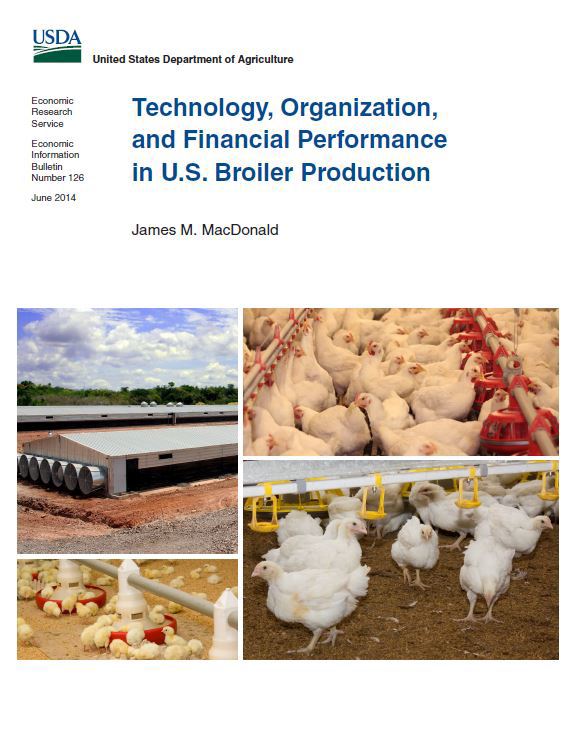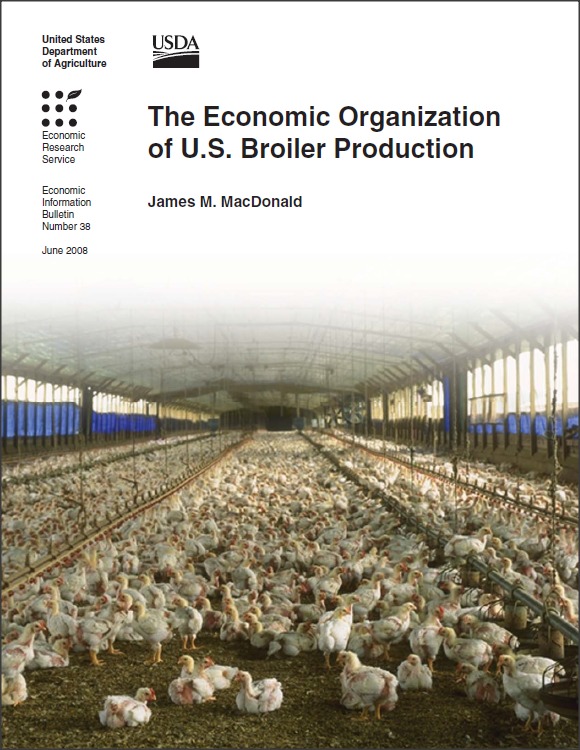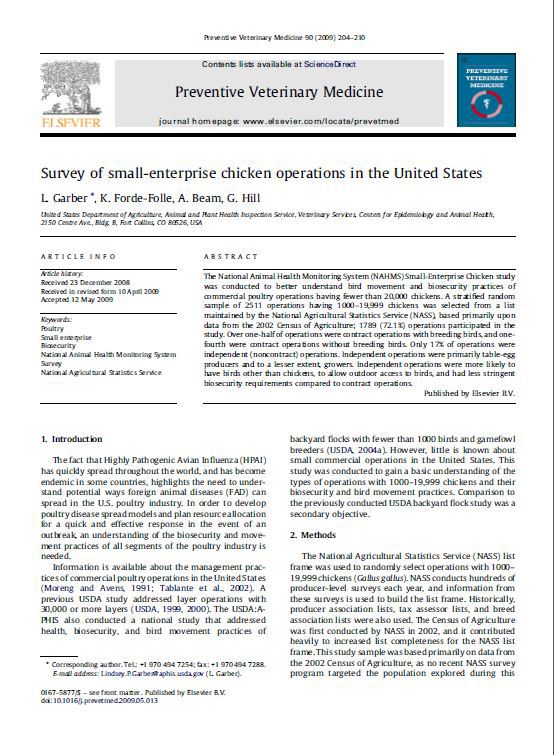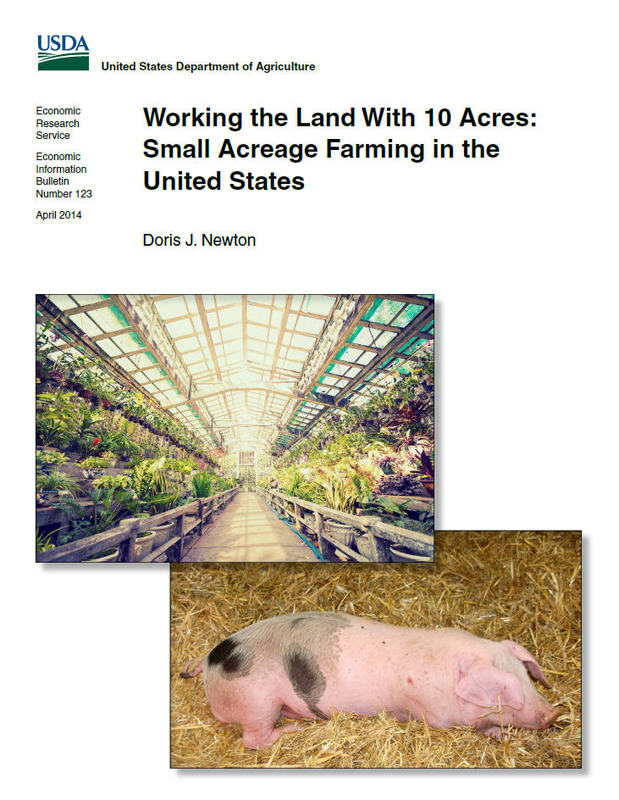Selected USDA Research on Poultry Farming
The U.S. Department of Agriculture program of research into poultry farming is highly focused on specifIc issues such as poultry litter management, disease control and resistance, and nutrition.
The most relevant recent USDA research on poultry farming as a general activity are the following two comprehensive reports by James M. MacDonald and one journal article documenting a study of bird movement and biosecurity practices of commercial poultry operations by Garber, et al.
Several other reports on small farms are also included.
Technology, Organization, and Financial Performance in U.S. Broiler Production (2014)
MacDonald, James, M.
Full text
"Between 1960 and 1995, U.S. broiler production grew by 5.6 percent per year, but a lack of growth since 2008 has placed new financial pressures on contract growers. This report uses USDA survey data to delineate the key features of the industry’s organization and to analyze its recent financial and productive performance."
The Economic Organization of U.S. Broiler Production (2008)
MacDonald, James, M.
Full text
"Broiler production in the United States is coordinated almost entirely through systems of production contracts, in which a grower’s compensation is based, in part, on how the grower’s performance compares with that of other growers. The industry is undergoing a gradual structural change as production shifts to larger broiler enterprises that provide larger shares of an operator’s household income. Larger enterprises require substantially larger investments in broiler housing, and new or retrofitted houses are also an important source of productivity growth in the industry. This report, based on a large and representative survey of broiler operations, describes the industry’s organization, housing features, contract design, fees and enterprise cost structures, and farm and household finances."
Survey of small-enterprise chicken operations in the United States (2009)
Garber, L. Forde-Folle, K. Beam, A. Hill, G.
Full text
"The National Animal Health Monitoring System (NAHMS) Small-Enterprise Chicken study was conducted to better understand bird movement and biosecurity practices of commercial poultry operations having fewer than 20,000 chickens. A stratified random sample of 2511 operations having 1000-19,999 chickens was selected from a list maintained by the National Agricultural Statistics Service (NASS), based primarily upon data from the 2002 Census of Agriculture; 1789 (72.1%) operations participated in the study. Over one-half of operations were contract operations with breeding birds, and one-fourth were contract operations without breeding birds. Only 17% of operations were independent (noncontract) operations. Independent operations were primarily table-egg producers and to a lesser extent, growers. Independent operations were more likely to have birds other than chickens, to allow outdoor access to birds, and had less stringent biosecurity requirements compared to contract operations."
Profitable Poultry: Raising Birds on Pasture (2012)
Sustainable Agriculture Research & Education (SARE)
Full text
"Profitable Poultry: Raising Birds on Pasture features farmer experiences plus the latest research in a guide to raising chickens and turkeys using pens, movable fencing and pastures. A Wisconsin family nets between $2 and $6 per bird for their pasture-raised poultry, and partners with two other producers in processing and marketing. A New Mexico producer who rotates birds across his property year-round has seen dramatic improvements to his desert soil. And a Wyoming producer was able to quit a full-time, off-the-farm job to stay home and raise pastured poultry with help from her school-age kids. With those examples and more from around the country, the bulletin touches on the pasturing system's many opportunities to improve profits, environment and rural family life. With original ideas for marketing poultry products and a page of additional, expert resources, this 16-page bulletin offers a jumping-off point for new producers."
Working the Land With 10 Acres: Small Acreage Farming in the United States (2014)
Economic Information Bulletin, Number 123
Newton, Doris J.
Full text
"This report focuses on Small Acreage farms, especially those grossing $10,000 or more in a given year, and examines such characteristics as production strategies, types of products, sales, household income, and financial performance."
America’s Diverse Family Farms, 2010 Edition
Hoppe, Robert Banker, David E. MacDonald, James Michael
Full text
Economic Information Bulletin, Number 67
"American farms vary widely in size and other characteristics, but farming is still an industry of family businesses. Ninety-eight percent of farms are family farms, and they account for 82 percent of farm production. Small family farms make up most of the U.S. farm count and hold the majority of farm assets, but they produce a modest share of U.S. farm output. In contrast, large-scale family farms and nonfamily farms—only 12 percent of all farms—account for 84 percent of farm production. Small farms are less profitable than large-scale farms, on average, and the households operating them tend to rely on off-farm income for their livelihood. Because small-farm households receive most of their income from off-farm work, general economic policies—such as tax policy or economic development policy—can be as important to them as traditional farm policy."
 An official website of the United States government.
An official website of the United States government.







